Acrylyl chloride
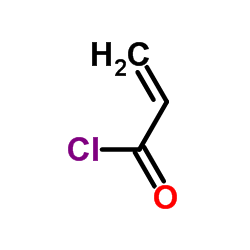
Acrylyl chloride structure
|
Common Name | Acrylyl chloride | ||
|---|---|---|---|---|
| CAS Number | 814-68-6 | Molecular Weight | 90.508 | |
| Density | 1.1±0.1 g/cm3 | Boiling Point | 75.5±0.0 °C at 760 mmHg | |
| Molecular Formula | C3H3ClO | Melting Point | 72-76ºC | |
| MSDS | Chinese USA | Flash Point | 16.1±0.0 °C | |
| Symbol |



GHS02, GHS05, GHS06 |
Signal Word | Danger | |
| Name | Acrylyl chloride |
|---|---|
| Synonym | More Synonyms |
| Density | 1.1±0.1 g/cm3 |
|---|---|
| Boiling Point | 75.5±0.0 °C at 760 mmHg |
| Melting Point | 72-76ºC |
| Molecular Formula | C3H3ClO |
| Molecular Weight | 90.508 |
| Flash Point | 16.1±0.0 °C |
| Exact Mass | 89.987244 |
| PSA | 17.07000 |
| LogP | 1.06 |
| Vapour density | >1 (vs air) |
| Vapour Pressure | 104.8±0.1 mmHg at 25°C |
| Index of Refraction | 1.417 |
| InChIKey | HFBMWMNUJJDEQZ-UHFFFAOYSA-N |
| SMILES | C=CC(=O)Cl |
| Stability | Stable, but reacts violently with water. Incompatible with alcohols, oxidizing agents, strong bases. Light-sensitive. Highly flammable. |
CHEMICAL IDENTIFICATION
HEALTH HAZARD DATAACUTE TOXICITY DATA
|
| Symbol |



GHS02, GHS05, GHS06 |
|---|---|
| Signal Word | Danger |
| Hazard Statements | H225-H314-H330 |
| Precautionary Statements | P210-P260-P280-P284-P305 + P351 + P338-P310 |
| Hazard Codes | C:Corrosive |
| Risk Phrases | R11;R34 |
| Safety Phrases | S16-S26-S28-S36/37/39-S45-S7/9 |
| RIDADR | UN 3383 6.1/PG 1 |
| WGK Germany | 3 |
| RTECS | AT7350000 |
| Packaging Group | II |
| Hazard Class | 3 |
| HS Code | 2916190090 |
|
~10% 
Acrylyl chloride CAS#:814-68-6 |
| Literature: Opaleva; Dogadina; Ionin Russian Journal of General Chemistry, 1997 , vol. 67, # 2 p. 326 - 327 |
|
~90% 
Acrylyl chloride CAS#:814-68-6 |
| Literature: Arumugam, Subramaniam; Verkade, John G. Journal of Organic Chemistry, 1997 , vol. 62, # 14 p. 4827 - 4828 |
|
~63% 
Acrylyl chloride CAS#:814-68-6 |
| Literature: Societe Nationale des Poudres et Explosifs Patent: US4297301 A1, 1981 ; |
|
~% 
Acrylyl chloride CAS#:814-68-6 |
| Literature: Journal of the American Chemical Society, , vol. 70, p. 500 Journal of the American Chemical Society, , vol. 60, p. 1326 |
|
~% 
Acrylyl chloride CAS#:814-68-6 |
| Literature: US2050752 , ; GB333079 ; DE547645 , ; Fortschr. Teerfarbenfabr. Verw. Industriezweige, vol. 18, p. 285 |
|
~% 
Acrylyl chloride CAS#:814-68-6 |
| Literature: US2490386 , ; |
|
~% 
Acrylyl chloride CAS#:814-68-6 |
| Literature: Journal of Organic Chemistry, , vol. 9, p. 509,510 |
|
~% 
Acrylyl chloride CAS#:814-68-6
Detail
|
| Literature: Journal of Molecular Structure, , vol. 443, # 1-3 p. 163 - 173 |
| Precursor 7 | |
|---|---|
| DownStream 10 | |
| HS Code | 2916190090 |
|---|---|
| Summary | 2916190090 unsaturated acyclic monocarboxylic acids, their anhydrides, halides, peroxides, peroxyacids and their derivatives。supervision conditions:AB(certificate of inspection for goods inward,certificate of inspection for goods outward)。VAT:17.0%。tax rebate rate:9.0%。MFN tariff:6.5%。general tariff:30.0% |
|
iRGD conjugated TPGS mediates codelivery of paclitaxel and survivin shRNA for the reversal of lung cancer resistance.
Mol. Pharm. 11(8) , 2579-91, (2014) Multidrug resistance (MDR) is one of the major obstacles in tumor treatment. Herein, we reported an active targeting strategy with peptide-mediated nanoparticles deep into tumor parenchyma, which iRGD... |
|
|
Controlling osteogenic stem cell differentiation via soft bioinspired hydrogels.
PLoS ONE 9(6) , e98640, (2014) Osteogenic differentiation of human mesenchymal stem cells (hMSCs) is guided by various physical and biochemical factors. Among these factors, modulus (i.e., rigidiy) of the ECM has gained significant... |
|
|
Effect of Relative Arrangement of Cationic and Lipophilic Moieties on Hemolytic and Antibacterial Activities of PEGylated Polyacrylates.
Int. J. Mol. Sci. 16 , 23867-80, (2015) Synthetic amphiphilic polymers have been established as potentially efficient agents to combat widespread deadly infections involving antibiotic resistant superbugs. Incorporation of poly(ethylene gly... |
| 2-Propenoyl chloride |
| prop-2-enoyl chloride |
| Prop-2-enoylchlorid |
| MFCD00000731 |
| PROPENOYL CHLORIDE |
| EINECS 212-399-0 |
| Acryloyl chloride |

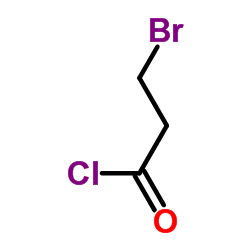

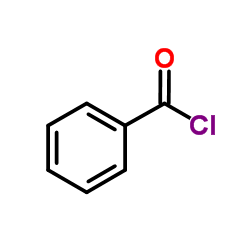
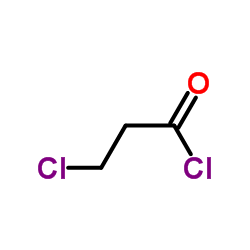




 CAS#:52684-34-1
CAS#:52684-34-1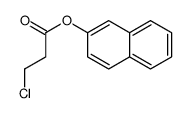 CAS#:111709-01-4
CAS#:111709-01-4 CAS#:112231-59-1
CAS#:112231-59-1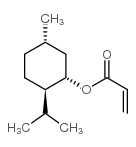 CAS#:108945-28-4
CAS#:108945-28-4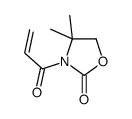 CAS#:111838-81-4
CAS#:111838-81-4 CAS#:307-98-2
CAS#:307-98-2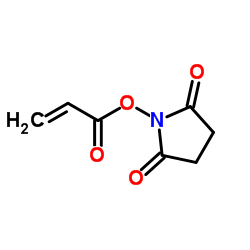 CAS#:38862-24-7
CAS#:38862-24-7 CAS#:335-83-1
CAS#:335-83-1 CAS#:4074-88-8
CAS#:4074-88-8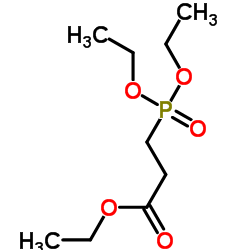 CAS#:3699-67-0
CAS#:3699-67-0
